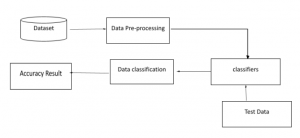Description
Money Laundering Detection using AI
ABSTRACT
Money Laundering Detection using AI – Today, money laundering poses a serious threat not only to financial institutions but also to the nation. This criminal activity is becoming more and more sophisticated and seems to have moved from the cliché of drug trafficking to financing terrorism and surely not forgetting personal gain. Most international financial institutions have been implementing anti-money laundering solutions to fight investment fraud.
Purpose
The purpose of this paper is to develop, describe and validate a machine learning model for prioritizing which financial transactions should be manually investigated for potential money laundering.
Introduction
Money laundering (ML) is a process to make illegitimate income appear legitimate; this is also the process by which criminals attempt to conceal the true origin and ownership of the proceeds of their criminal activity. ML has been defined by Genzman as an activity that “knowingly engage in a financial transaction with the proceeds of some unlawful activity with the intent of promoting or carrying on that unlawful activity or to conceal or disguise the nature location, source, ownership, or control of these proceeds”. Through money laundering, criminals try to convert monetary proceeds derived from illicit activities into “clean” funds using a legal medium such as large investment or pension funds hosted in retail or investment banks.
Dataset
The dataset used by most papers has been old transactions received from financial institutions. That consists of traditional banking transactions. This synthetic dataset will help us test the money laundering detection with very sparsely labeled data.
Problem Statement
The purpose of this paper is to develop, describe and validate a machine learning model for prioritizing which financial transactions should be manually investigated for potential money laundering.
Design Methodology
A supervised machine learning model is trained by using three types of historic data: “normal” legal transactions; those flagged as suspicious by the bank’s internal alert system; and potential money laundering cases reported to the authorities. The model is trained to predict the probability that a new transaction should be reported, using information such as background information about the sender/receiver, their earlier behaviors, and their transaction history.
Proposed Work
We split the data into sequential train and test datasets for all experiments. The train set includes all labeled samples up to the 34th time-step (16670 transactions), and the test set includes all labeled samples from the 35th time-step, inclusive, onward (29894 transactions). We train each supervised model on the train set using all features and then evaluate them on the entire test set. To measure performance over time. We use the scikit-learn implementation of Neural Network
Advantages
- We have proposed this AML with supervised learning and got the highest accuracy for prediction as a state-of-art method
SYSTEM ARCHITECTURE

HARDWARE AND SOFTWARE SPECIFICATION
Hardware:
1 GB RAM
80 GB Hard Disk
Intel Processor
LAN
Software :
Windows OS
Python GUI or Anaconda Navigator
System Requirement:
Operating System: Windows 7 Ultimate 32 bit / Windows XP
MODULES
- DATA COLLECTION
- DATA PRE-PROCESSING
- FEATURE EXTRACTION
- EVALUATION MODEL




































































































































































































































































































































































































































































































































































































































































































































































































































































































































































































































































Customer Reviews
There are no reviews yet.